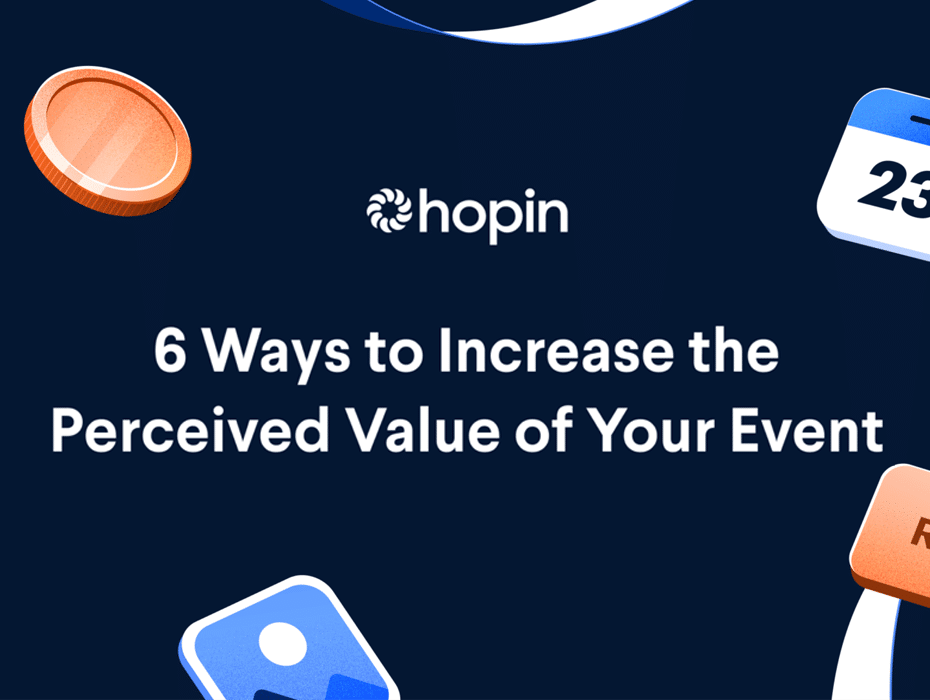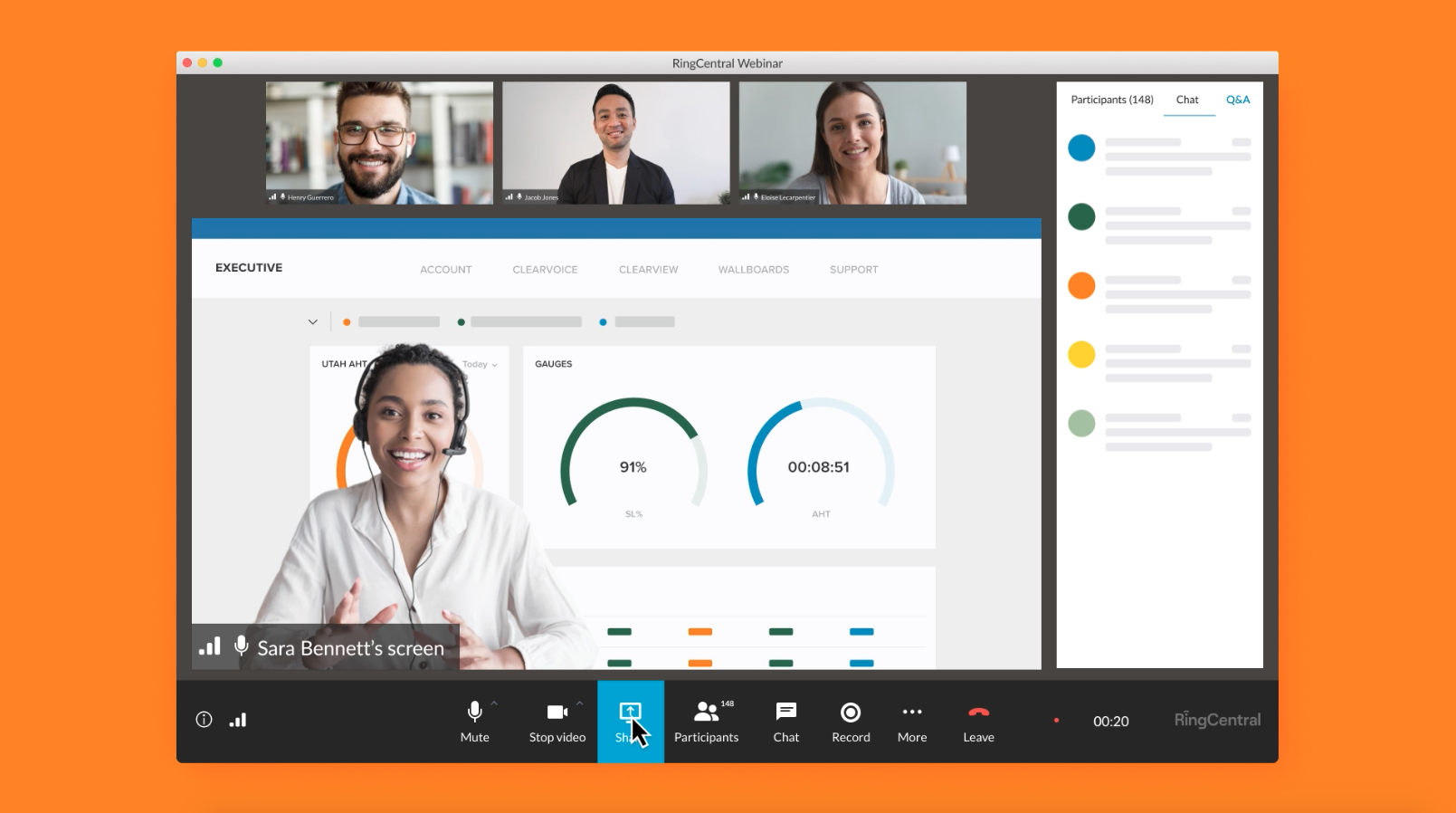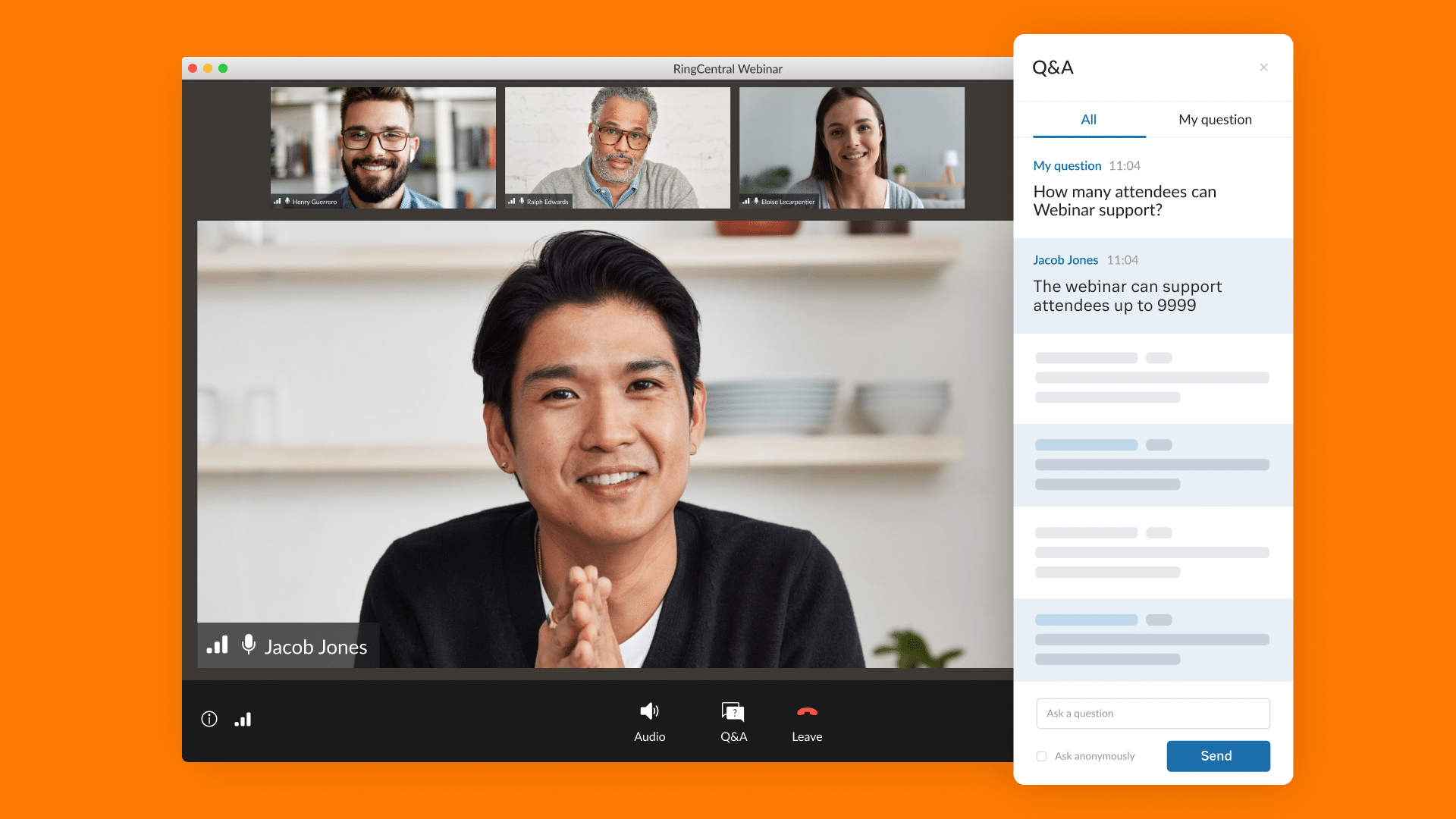It’s natural for some doubt to creep in when you’re planning an event. Especially when figuring out if — and how much — to charge for it.
Your mind can start drumming up questions: Will people actually pay for this? Will they show up? Will this end up being worth it?
The science is clear: When we second-guess ourselves, we make worse decisions.
So, when faced with an event pricing dilemma –– wondering whether or not to charge for registration –– if your instincts lean toward paid, listen to them.
While free events are the right choice for certain situations, they can be perceived as having a lack of value, which can end up deterring registrations. (More on that shortly.)
Free events, when marketed right, can draw massive crowds –– and sometimes that’s the core goal. But there’s often a big brand name behind those experiences that helps draw in attendees.
Strategy #1: Make sure your event content is set to deliver real value
It sounds obvious, but that’s because high-quality event content is crucial to ensuring genuine event value. Efforts to drive up the perceived value of your event will be for naught if attendees walk away from the experience underwhelmed and wishing they could get their time back.
So, before you do anything else, take a look at the content you’re delivering to attendees.
It doesn’t matter whether they’re paying $1 or $1,000: Your attendees will expect to get value out of giving their money, time, and attention.
That means your content needs to be customized for your target audience. It needs to be relevant and engaging.
To kickstart your content creation process, ask yourself:
- What pain points can the event experience address?
- What topics are attendees eager to learn about? What’s important to them?
- Are there thought leaders or performers they’d love to hear from or even meet?
Great content is at the heart of engagement. Remember, attendees can be passively engaged without necessarily taking action during the event experience. Consider all the people who read social media posts without liking or commenting on them.
When passively engaged by great event content, attendees often :
- Learn something new
- Feel empowered to apply what they’ve learned
- Connect to messages and stories, and sometimes leave feeling like they want to be part of those messages and stories
- Feel inspired to share that content with their own communities
Once you have your content locked in, it’s time to promote it. Use your event website to highlight the strong alignment between your event content and how it addresses your audience’s needs. Help would-be attendees see the value in your event.
Strategy #2: Fight the urge to make everything free
If the event you’re planning isn’t a recurring experience with a built-in audience and pre-seeded enthusiasm, you might be tempted to make your event free thinking it will get people in the door.
But pause and do a gut check on that front: Do you really think the content, speakers, and experience you’re pulling together is worth a grand total of $0 to your audience?
If the goals and objectives for your event line up with a plan to make it free, go for it. For example, many organizers choose to hold online experiences at no cost to attendees as a way of expanding their reach and eliminating any cost barriers to attending.
There’s nothing wrong with that approach, but research shows that free tickets can also lead to more no-shows.
When an event is free, attendees may perceive it as offering a lack of value. That perceived lack of value leads to low commitment. Low commitment means low turnout. And with no skin in the game — no ticket paid for — flaking on a free event has no impact, so folks often feel free to bail.
When registrants pay a fee of any kind, research shows they’re more likely to attend the event. That’s especially true if they pay in advance:
- Free events get around 55% of registrants to show up
- Pay-at-the-door events get around 65% of registrants to show up
- And prepaid events get 80% of registrants to show up
Business executives have long known this. In 2002, the “Harvard Business Review” reported that “people are more likely to consume a product when they are aware of its cost.”
So now that you’ve seen some of the benefits of charging for your event, where do you start?
Strategy #3: Ease in with freemium
Feeling hesitant about charging for an event? Or just want to keep the barriers to entry low so people can understand exactly what you’re offering?
Try easing into paid ticket types by experimenting with a freemium pricing model.
Freemium describes a business model in which basic features are offered to all for free, but additional and supplemental features are made available at a premium.
What this means for your event is that you’d employ both free and paid ticket types.
You’ll want to strike a balance. If you make the very best parts of your event available for free, research suggests people won’t be motivated to pay for additional access.
Create a meaningful, engaging free event that gets registrants in the door — and on your email list, so you can market to them in the future. Make sure your general admission experience is in line with your event brand.
Then, offer a premium ticket type, featuring add-on experiences at an additional cost. Those could include:
- Opportunities to join exclusive breakout rooms with celebrity speakers
- Premium event swag
- Access to VIP-only areas
- Exclusive VIP networking
- Special, early access to a new product or service
- First chance to RSVP to the next event
You can keep going, offering additional paid ticket tiers — like early bird, VIP, and extra networking — to excite attendees and seek to better understand what your audience gravitates toward. Choose ticket names that emulate aspirational groups folks might want to be associated with. (Who doesn’t want to be a VIP, after all?)
Tiering can also help with event marketing and promotion. It segments your audience so you can target specific groups across various marketing channels.
Strategy #4: Offer an exclusive VIP experience
Everyone loves to feel special and valued.
And as anyone who’s been bumped up to business class or gotten the best table at a fancy restaurant knows, being treated extra-well makes you more likely to enjoy the experience. You feel like you’re part of an exclusive group.
And the science checks out. According to University of Chicago Professor Alex Imas: “The desire to possess something that others want exclusively is a great passion of human nature.”
By taking this desire and applying it to your event, you can turn up the dial on the value your attendees see in your event.
Here are a few ways to tap into this strategy:
- Consolidate premium ticket types into one complete VIP experience package, and offer a limited number of them. This creates a sense of scarcity, which marketers know drives up interest and increases how much people are willing to pay for an experience.
- Offer custom VIP experiences depending on how your event is structured. If it’s a hybrid event, for instance, you can offer exclusive virtual networking opportunities to virtual VIPs and an in-person roundtable for those at the physical part of your event, each at its own price point.
Strategy #5: Capitalize on established brand equity
Consumers spend money in ways that are aligned with their values. And they do that even when it doesn’t make the most economical sense.
A Sprout Social study found that when customers feel connected to brands, up to 57% of them will increase their spending with that brand, 76% will buy from that brand over a competitor, and 64% will be loyal to that brand over time.
The opposite is true, too: If consumers don’t feel connected to a brand, 70% of them are less likely to spend money at said brand.
That’s why creating, building, and strengthening an event brand is so important. As you put on more and more events and build a loyal, excited community, you can start to expand the perceived value of your flagship experiences by employing a paid ticketing structure for all of your events. After all, people will be buying into your brand.
That might include:
- Charging a nominal registration fee for general admission tickets
- Adding premium and VIP ticket types to show potential registrants there’s a bevy of valuable content, connections, and opportunities available to them
- Establishing a loyalty program, and giving points, prizes, or discounts to returning attendees
Once you’re able to start charging for all aspects of your event experience, you’re not just increasing the audience’s perception of your event’s value, you’re also offsetting the cost of producing your experience and ensuring you don’t blow your event budget.
And the best part?
When the perceived value of your event goes up and people start purchasing paid tickets, that no-show rate declines dramatically and overall registrations for your experience increase. A virtuous cycle, indeed.
Strategy #6: Tap into technology to create a simple registration process
The technology you use to support your event can help simplify the entire experience for your audience and leave registrants and attendees with a positive perception.
For example, having an easy-to-use, customizable registration page will not only make your event look more professional — it will also support a straightforward registration and ticket-purchasing experience, leaving a lasting positive impression on registrants.
You’ll want to be able to customize the page so it’s in line with your branding. This is your first chance to make a great first impression, so don’t underestimate this step.
Make sure you choose an event registration platform that lets you offer tiered ticket types, each offering their own special experience.
And if you’re looking for a partner to guide you through these steps, and share tips and tricks from the thousands of events that have happened on RingCentral Events, reach out to one of our team members to see how we can help.
Originally published Sep 01, 2022, updated Nov 10, 2023





